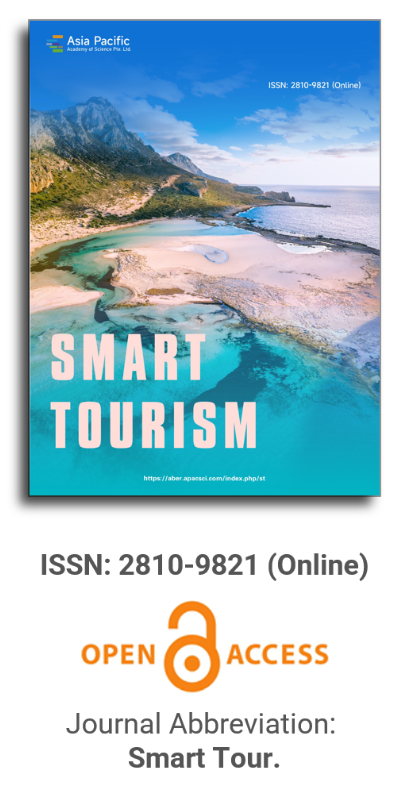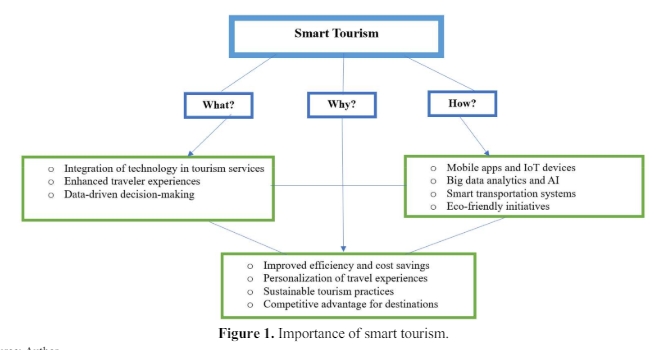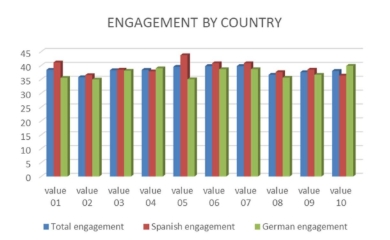


Research on the construction countermeasure and patterns of smart famous scenic site—A case study of Gulangyu scenic area in Xiamen
Vol 3, Issue 1, 2022
Download PDF
Abstract
Through field survey, understanding the current situation of the smart tourist spot construction of Gulangyu in Xiamen, finding some problems such as the poor network coverage and communication, and incomplete data center. It puts forward feasible countermeasures from the four aspects such as the basis of the scenic area construction, supervision system construction, the intelligence services and marketing construction, environment and resources protection. It proposes the mode of composite construction of “the government leading, marketing orientation, the scenic spot construction”, expecting to promote the smart construction of Gulangyu.
Keywords
References
- Shao Q. China will initially realize “smart tourism” in 10 years [Internet]. [cited 2011 Jul 12]. Available from: http://news.xinhuanet.com/politics/2011–07/12/c_121657882.htm.
- Zhang X, Deng G. On the construction of “smart scenic spot”: Part I. China Tourism News 2010; (1).
- Deng X, Li X. Research on the evaluation standard system of “smart scenic spot”. E-Government 2012; (9): 100–106.
- Ge J, Gu X, Long Y. On the construction of smart scenic spots based on stakeholder theory. Productivity Research 2012; (5): 183–184.
- Liang Q, Zhang H. Summary of research on the development of smart scenic spots. Journal of Xi’an University of Petroleum (Social Science Edi-tion) 2013; 22(5): 52–56.
- Wang L, Cheng J, Zhou R. Current situation and Reflection on the construction of smart scenic spots in China. Journal of Sichuan Tourism Univer-sity 2014; (4): 54–56.
- Sheng F. Research on tourist experience di-mension and regulation strategy of smart scenic spot—Taking Zhongshan Mausoleum scenic spot in Nanjing as an example. Nanjing: Nanjing Nor-mal University; 2014.
- Chen K, Zheng W. Cloud computing: System examples and research status. Journal of Software 2009; 20(5): 1337–1348.
- International Telecommunication Union (ITU). The Internet of Things, 2005 [Internet]. [cited 2011 Dec 13]. Available from: http: //www. inter-netofthings.net.cn/html/index.php/Index/d/id/135.
- Ning H, Xu Q. Some thoughts on the devel-opment of global Internet of things and the con-struction of Internet of things in China. Acta Elec-tronica Sinica 2010; 38(11): 2590–2599.
- Zhang L, Li C, Liu M. Basic concept and the-oretical system of smart tourism. Journal of Tourism 2012; 27(5): 66–73.
- Yang L, Yin S. Application and evaluation of artificial intelligence method in tourism prediction. Journal of Tourism 2008; 23(9): 17–22.
- Zhang Z. Analysis on the design of function and framework of smart scenic spot. Electronic Technology and Software Engineering 2013; (18): 106.
- Weng Q, Chen Z. Research on service innova-tion of smart scenic spot––Taking Sanfang and Qixiang in Fuzhou as an example. Journal of Bei-jing International Studies University 2014; (5): 49–55.
- Shi Y. Application of new generation commu-nication technology in smart tourism in the era of experience economy. Science and Technology Horizon 2013; (9): 180–193.
- Qiao H. Thoughts on the construction of tour-ism public information service system. Central South University of forestry and Technology (So-cial Science Edition) 2012; 6(2): 27–29.
- Liu J. Research on the construction of Changzhou smart tourism public service platform. Central South University of forestry and Technol-ogy (Social Science Edition) 2012; 6(5): 22–24.
- Dang A, Zhang D, Chen Y. Research on the connotation and overall framework of smart scenic spot. Chinese Garden 2011; (9): 15–21.
Supporting Agencies
Copyright (c) 2022 Li Tang
License URL: https://creativecommons.org/licenses/by/4.0/

This site is licensed under a Creative Commons Attribution 4.0 International License (CC BY 4.0).

Prof. Hung-Che Wu
Nanfang College, Guangzhou
China
Indexing & Archiving
Asia Pacific Academy of Science Pte. Ltd. (APACSCI) specializes in international journal publishing. APACSCI adopts the open access publishing model and provides an important communication bridge for academic groups whose interest fields include engineering, technology, medicine, computer, mathematics, agriculture and forestry, and environment.



.jpg)
.jpg)

.jpg)

